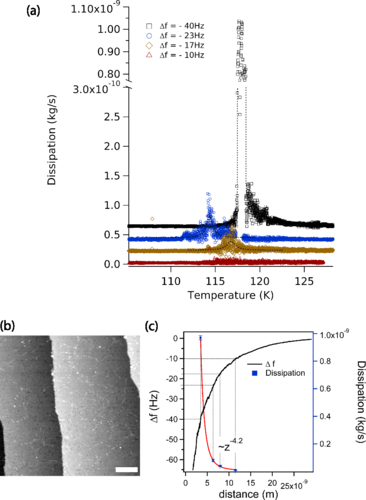The critical fluctuations at second order structural transitions in a bulk crystal may affect the dissipation of mechanical probes even if completely external to the crystal surface. Here, we show that noncontact force microscope dissipation bears clear evidence of the antiferrodistortive phase transition of SrTiO3, known for a long time to exhibit a unique, extremely narrow neutron scattering “central peak.” The noncontact geometry suggests a central peak linear response coupling connected with strain. The detailed temperature dependence reveals for the first time the intrinsic central peak width of order 80 kHz, 2 orders of magnitude below the established neutron upper bound.

The critical fluctuations at second order structural transitions in a bulk crystal may affect the dissipation of mechanical probes even if completely external to the crystal surface. Here, we show that noncontact force microscope dissipation bears clear evidence of the antiferrodistortive phase transition of SrTiO3, known for a long time to exhibit a unique, extremely narrow neutron scattering “central peak.” The noncontact geometry suggests a central peak linear response coupling connected with strain. The detailed temperature dependence reveals for the first time the intrinsic central peak width of order 80 kHz, 2 orders of magnitude below the established neutron upper bound.
